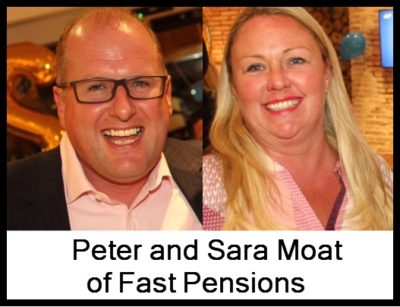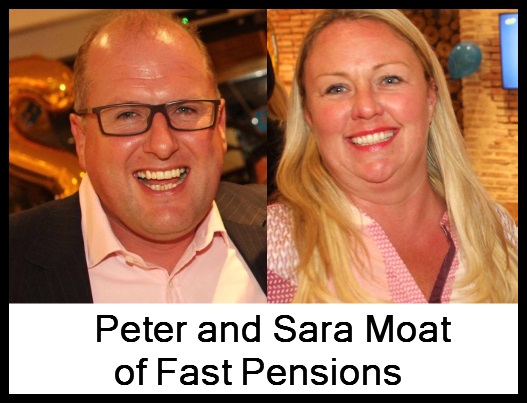 Yesterday, Wednesday 30th May, in the High Court, the petition to wind up Fast Pensions and the associated companies and occupational pension schemes, was heard. The order was made that the companies and schemes should be wound up.
Yesterday, Wednesday 30th May, in the High Court, the petition to wind up Fast Pensions and the associated companies and occupational pension schemes, was heard. The order was made that the companies and schemes should be wound up.
I would like to thank Michael Gibbon, the son of one of the Fast Pensions members, for attending the hearing and representing Pension Life and the 400 victims. Michael has been enormously supportive of our work behind the scenes – although this has clearly been hindered by the obfuscation of the Moats.
Michael has kindly summarised the details of the proceedings – and I have added some further information and thoughts.
I will now be asking all the Fast Pensions members to provide their documentation to my Assistant who will be collating as much evidence as possible for the Insolvency Service, insolvency practitioner and/or independent trustees.
The six companies originally placed into provisional liquidation by the Insolvency Service on 29th March 2018 were:
- Fast Pensions Ltd – company registration number 08121954 – was incorporated on 28 June 2012. The company’s registered office is at Crown House, 27 Old Gloucester Street, London WC1N 3AX
- FP Scheme Trustees Ltd – company registration number 09126225 – was incorporated on 11 July 2014. The company’s registered office is at 20-22 Wenlock Road, London N1 7GU
- Blu Debt Management Ltd – company registration number 06699233 – was incorporated on 16 September 2008. The company’s registered office is at Gilbert Wakefield House, 67 Bewsey Street, Warrington WA2 7JQ
- Blu Financial Services Ltd – company registration number 05912973 – was incorporated on 22 August 2006. The company’s registered office is at Gilbert Wakefield House, 67 Bewsey Street, Warrington WA2 7JQ
- Blu Personal Finance Ltd – company registration number 07758290 – was incorporated on 31 August 2011. The company’s registered office is at Gilbert Wakefield House, 67 Bewsey Street, Warrington WA2 7JQ
- Umbrella Loans Ltd – company registration number 07331044 – was incorporated on 30 July 2010. The company’s registered office is at Gilbert Wakefield House, 67 Bewsey Street, Warrington WA2 7JQ
The fifteen occupational schemes run by Peter and Sara Moat were:
Broughton Retirement Plan
DM1 Retirement Plan
Elphinstone Retirement Plan
EP1 Retirement Plan
Fleming Retirement Plan
FP1 Retirement Plan
FP2 Retirement Plan
FP3 Retirement Plan
Galileo Retirement Plan
Golden Arrow Retirement Plan
Leafield Retirement Plan
Springdale Retirement Plan
Talisman Retirement Plan
Templar Retirement Plan
VRSEB Retirement Plan

Despite the Moats being caught up in six companies and 15 occupational schemes no one was present to represent any of the named companies or schemes.
Peter and Sara Moat are not the only people connected in this pension liberation scam.
A connected party to the companies was Miss Jane Wright who is a former employee of Peter Moat. Mrs Sara Moat/Mr Peter Moat and Miss Jane Wright had an unhealthy connection as they were all in a net of other associated companies. A Mr Chapman – who did apply for administration before the last hearing but this was rejected – is also said to have been instructed by Peter Moat.
The Moats various companies were operating pension liberation schemes in the form of loans. The victims of these liberation schemes were later met with tax demands by HMRC as they payments they received were deemed as unauthorised payments.
When selling the schemes the Moats used unacceptable sales techniques – cold calling, mis-selling and with-holding important information were among these. Furthermore an upfront fee of £1,000 was taken from each investor at the start of the investment of the funds – and this was undisclosed to the members as well.

A total of £21m was transferred into the schemes under
Peter Moat’s control however there was no information on the pension portfolios and what happened to the investors’ funds. The victims have had no updates on the funds, commissions or fee´s. Miss Jane Wright (who acted as the “trustee”) would always state she would seek and come back when questioned by the members about their funds.
Furthermore it is now clear that Peter Moat was acting as a de facto director in breach of his disqualification while acting for Blu Finance Group.
AND
Mr Henderson – accountant to ALL the schemes was also a disqualified director.
In attendance for the Insolvency Service were Mary Greenwell, and colleague, Tim Ward, Provisional liquidator. With the following points being raised:
* There was a Lack of information and cooperation with the Insolvency Service investigation
* Failure to respond to determinations by the Pensions Ombudsman and/ no evidence of compensation paid to members
* No professional advisers were involved
* Commission on the investments were not disclosed – no transparency to the investors was given
* On reporting on schemes, there was simply one page per scheme which was very concerning
* Evidence of the lack of proper transfer requests
* The six selling points used to sell the schemes proved to be false
* Very unclear on the advice provided to investors
* No commercial prosperity
* No information re bank balances
* Lack of transparency to ALL involved – members/Insolvency Service/Pensions Ombudsman/Pension Life
* The skeleton argument showed a flowchart which demonstrated the net of the Moats

All the companies involved in this scam were controlled by Peter Moat ( acting under disqualification) and using other people. The whereabouts of the funds presently is unclear – funds were transferred to and through other companies controlled by Peter Moat. Some of it was invested in Umbrella Loans which was insolvent. Some of it was transferred to the Blu companies.
All the funds will need to be traced as it is unclear what monies are outstanding, however with very limited information provided by the companies this may prove to be difficult. It is thought that a huge amount of funds will be practically impossible to track or find. Then there is the £4m paid in commission which obviously came from investors’ funds and is therefore no longer attainable.
What can be ascertained is the clear evidence of mis-selling and based on the evidence, it was in the public interest to wind the companies and schemes up as it was a very clear case that these people could not be allowed to continue
With all this evidence there was no doubt that the order should be made that the companies and schemes should be wound up.

Leave a Reply